The price of failure
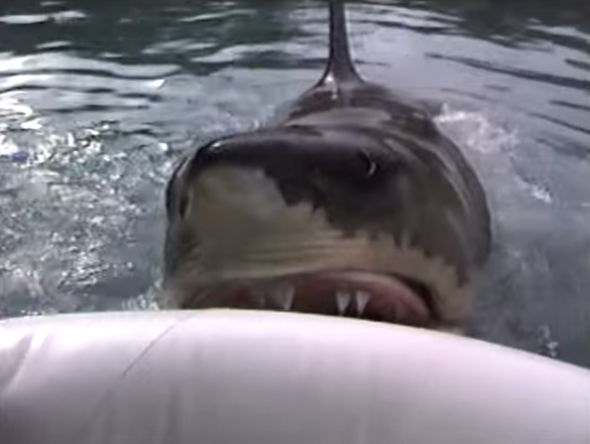
Overcoming the problems would be expensive. Dozens of engineers were working round-the-clock to try and get Kongfrontation, Earthquake and Jaws in working order, and the park faced spending millions on advertising to persuade visitors to return once the rides were up-and-running. With fewer guests than had been expected, money for these activities was saved by slashing employees’ hours.
When they were working, staff were expected to conform to “The Universal Approach”. Detailed in an extensive letter issued to all employees, this outlined how complaints should be handled. “Please do not agree with the guest that we should not have opened on June 7 as advertised,” it stated. “People from around the world committed to vacation plans many months in advance to coincide with the opening of our studio. We couldn't allow them to arrive only to find our gates locked.” By the end of August, 250 of those staff would find themselves unemployed, with Universal opting to cut its wage bill.
While Universal Studios Florida’s image had been damaged, most did not believe that the impact was irreversible. The problems would “affect attendance at Universal, but this is a 20 or 30-year project,” said Kassan. “In that respect, it is not such a disaster.”
Fortunately, help was on its way...
Doc Brown to the rescue
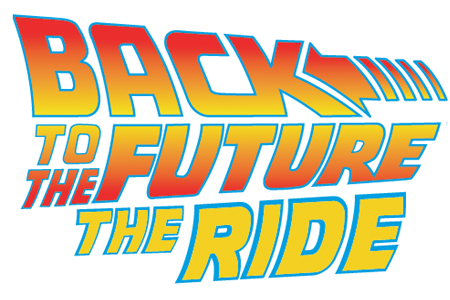
MCA had spent hundreds of millions of dollars to ensure that Universal Studios Florida would have a line-up that matched (and its view surpassed) that of Disney-MGM Studios on its opening day. Even if its opening period had gone more smoothly, plans were already in place to invest still more to maintain momentum during the park’s second year. Now, the battering that the park had received in the press, along with Disney-MGM’s successful debut and expansion plans, made the need for bright, shiny new attractions – ones that operated reliably – even more pressing.
In total, Universal planned to add no fewer than six new shows and one new ride in 1991, with a total price tag of $50 million. Shows based on The Blues Brothers, An American Tail and Ghostbusters were in the pipeline, but the vast majority of that budget would be spent on a single attraction. Having been in planning ever since the Florida project was green-lighted, Back to the Future: The Ride was being put together at the then-staggering cost of $40 million. It had to be good, and it had to work.
Back to the Future: The Ride would be Universal’s answer to Star Tours, the hugely popular simulator attraction at Disneyland that had now been cloned at Disney-MGM Studios. Spielberg, who executive-produced the trilogy of time travel movies upon which it would be based, had challenged Universal’s creative team to top Disney’s creation.
Spielberg felt that Back to the Future, which tells the story of the travels of Marty McFly (Michael J Fox) in a time machine invented by his friend Doctor Emmett Brown (Christopher Lloyd), would provide the perfect inspiration for a theme park attraction. “I thought that this one was ride that we couldn't let get away,” said Universal’s creative consultant. “It has the most interactive opportunities imaginable. We actually place people in a DeLorean [the time machine seen in the movies], and we send them shooting 25 years into the future and countless years into the past. It was a natural ride, I thought.”
Universal would push the boundaries of ride technology to fulfil Spielberg’s vision. Ostensibly, the attraction would be similar to Star Tours: a simulated flight through a fictional universe. However, on a technical level, Universal would approach the project very differently to Disney’s Imagineers. “Our philosophy was that Back to the Future would be the most complicated and technologically advanced attraction ever attempted,” said Terry Winnick, the park's vice president of special projects and entertainment.
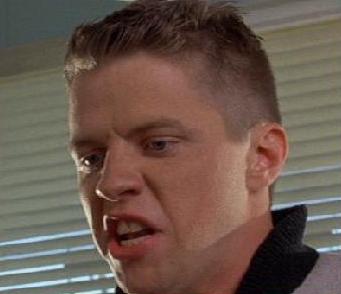
The ride’s plot would revolve around the theft of Doc Brown’s time machine by villainous Hill Valley resident Biff Tannen, the movie’s “bad guy”. Riders would assist Doc Brown by boarding another time machine and chasing Biff through the past. The queue would wind through the Doc’s Institute of Future Technology, with riders being batched into groups before watching a short pre-show during which Doc Brown would explain that on a time travel excursion back to 1955, the young Biff had stowed away in the DeLorean time machine. He was now on the loose, and up to no good. Both Christopher Lloyd and Thomas F. Wilson (who portrayed Biff in the films) reprised their roles, with Biff eventually hijacking the time machine.
After viewing the pre-show, riders would enter small rooms where they would board replicas of the DeLorean. The motor would fire and then a cool fog would envelop them as they flew off into Hill Valley, circa 2015, on the trail of Biff. On their travels, they would pass through an ice age and the Cretaceous period (complete with lava falls and dinosaurs) before finally catching up with Biff and bumping him, appropriately, “back to the future”.
The plot intentionally avoided most of the settings seen in the films, such as the 1955 version of Hill Valley or the Wild West town that was the focus of Back to the Future: Part III. “Rather than going back to the old West and encountering stuff you'd already seen, we wanted to give you some experiences that were more thrilling, more emotional,” explained Terry Winnick, also acting as producer of Back to the Future: The Ride. “What is more terrifying, more threatening, more exciting, than meeting a dinosaur?”
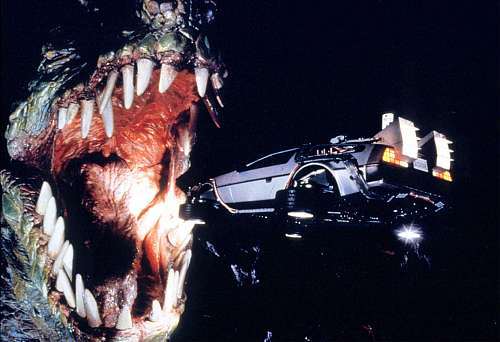
Before capturing the footage required for the ride, the production team built a camera-sized model of the exotic locations. The replica buildings were around three feet tall, allowing for a very high level of detail, and the Tyrannosaurus Rex encountered by riders during one of the key scenes was seven feet tall. With computer technology not yet playing a big role in movie production, the model was used in the filming of most of the scenes seen in the attraction. Stop-motion animation techniques were used to create the special effects.
“We’re gonna need a bigger screen…”
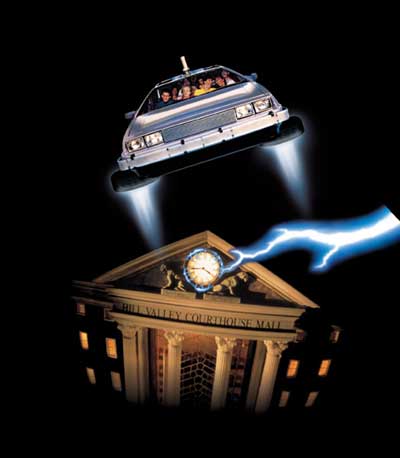
Shot on 70mm film, the four-minute movie would be projected onto an enormous dome-shaped Omnimax screen that would be 80 feet in diameter. The DeLorean ride vehicles could hold eight people each. After riders boarded, they would be hoisted into place in front of the screen, nine feet in the air, by an enormous lift. Once there, the screen would completely surround them, with Universal promising that the only way to avoid the image would be to close your eyes. This contrasted with Star Tours, where riders viewed the outside world through a relatively small viewport at the front of their “spacecraft”.
“Because of the curvature and the quality of the film images, you start to perceive that it’s 3-D,” promised Winnick. More than 300 speakers would pump in the ride’s audio, playing 11 different soundtracks simultaneously.
As with Kongfrontation, the Totally Fun Company worked on the attraction with Universal’s in-house team. Intamin, which had missed out on the bidding for Kongfrontation, won the tender to build the simulators. At the time, the company was the world’s leading supplier of such simulators, with over 50 motion cinemas to its name. In order to try out the ride experience before its construction, the system was tested in the Omnimax Theatre at the Expo ’86 event in Vancouver.
Riders would clamber into the vehicles in separate rooms, to give the impression that they were in individual simulators. In reality, though, 12 cars would be arrayed in front of the screen. There were two identical such screens in the show building, accommodating 24 cars in total.
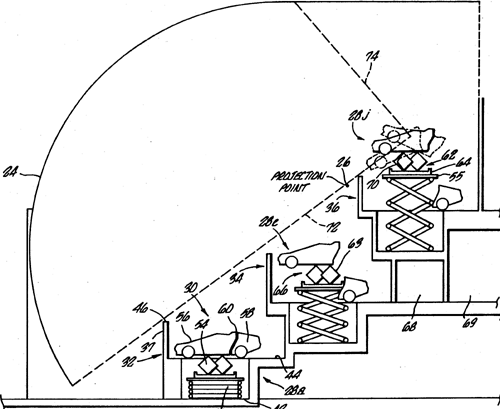
The DeLorean vehicles sat on hydraulically-activated platforms, or “motion bases”, enabling them to pitch and yaw in synchronization with the film to create the sensation of flying. Each was positioned slightly differently to provide the best possible view of the screen, meaning that the ride was slightly different depending on which vehicle riders were in. Riders could look left or right and see other guests gyrating around in DeLorean vehicles, potentially damaging the immersive effect - but most never noticed, instead assuming that they had the screen all to themselves.
As no simulator had been built on this scale before, Universal was concerned about the impact it would have on riders. “We thought for sure we would get a lot of people throwing up on the ride,” said Rich Costales, vice president of park operations and entertainment. That didn’t happen, but at a doctor’s suggestion water fountains were installed at the exits after it was found that guests were working up a powerful thirst.
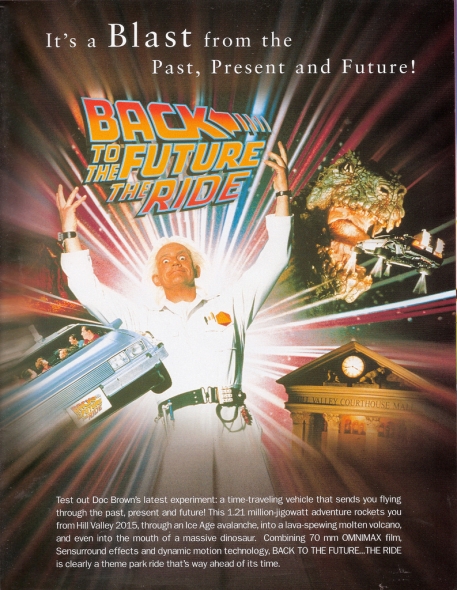

Comments
I am a huge fan of the Trilogy and was sad to see the ride go. It was definitely dated and most new visitors haven't even seen the BTTF movie(s) so I understand why they changed it to the Simpsons. The Simpson ride is great but I will miss the BTTF ride. Now I have a reason to go to Japan to relive the ride with my daughter.